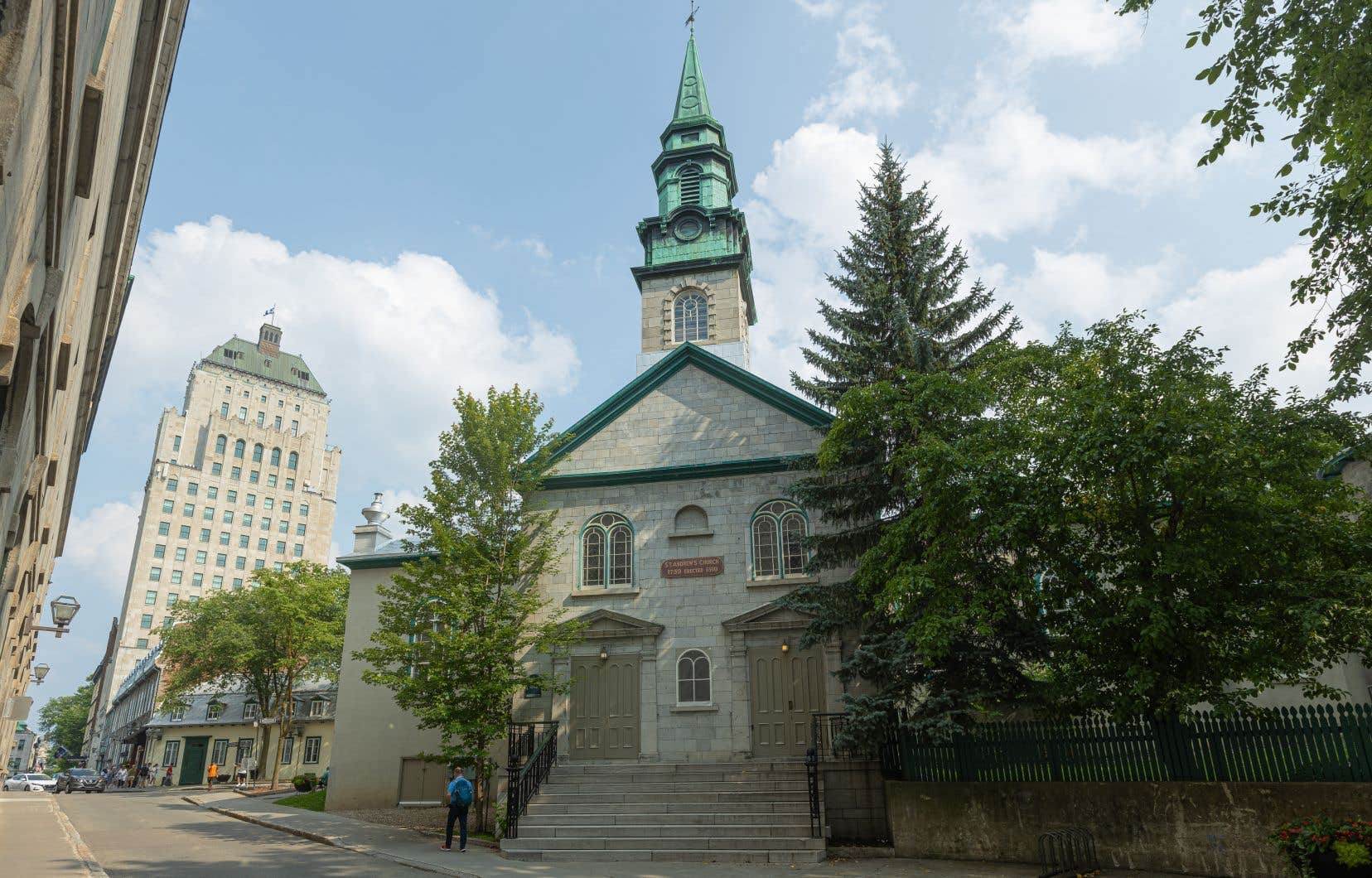In the heart of Old Quebec, the Presbyterian Church of St. Andrew’s has just lost its Victorian cachet during an up-to-date remodeling. The operation got the better of the cozy atmosphere that had reigned there since the erection of this building in 1810, barely half a century after the British conquest of 1759.
The architects of this revival have made a clean sweep of the furnishings and ornamentation of the 19the century, with the exception of the stained glass windows, the organ and the pulpit, now equipped with wheels so that it can be moved around as needed in what has become the Espace St. Andrew’s.
The transformation carried out by the Kamaï company does not convince the architectural historian Luc Noppen. “It’s an Airbnb church,” he laments, referring to the white walls of the building transformed into a multifunctional room for holding events such as congresses or weddings. “It’s a shame because there were pastel colors that invited reflection, contemplation. »
Red carpets accented with fleur-de-lis have taken the path of garbage. “These carpets, I always saw them there, then the older people told me they had always been there,” explains Guy Morisset of the St. Andrew’s community heritage management committee. They were starting to wear out, but they were very good wool rugs, we had [d’ailleurs] hard to clean them, because they tended to shrink. »
We tend to sanitize places so that they are supposedly more versatile. We remove all character so that they can satisfy everyone. It annoys me a little when I see all that disappear.
The balconies designed in 1875 were sacrificed during the works, most of which have just been completed, as reported The sun last week. “They were on the platform, so with an unnecessary slope for the needs of a multifunctional hall, unless they were to make it a performance hall, which was not the goal,” explains Mr. Morisset.
The floor benches were also dismantled. Regulars were able to keep a few pieces. The surplus was recovered by the Kamaï company. “This wood can be used to eventually make furnishings inside St. Andrew’s, it’s up to them,” summarizes Guy Morisset. No specific plan has been finalized in this respect.
Movable heritage
In this process, which began in 2019, the bicentenary church lost its original spatial organization. The space used to be deployed in width rather than in length, as is usual in churches.
“It was the last Presbyterian church in Quebec that remained offshore, regrets Luc Noppen. We tend to sanitize places so that they are supposedly more versatile. We remove all character so that they can satisfy everyone. It annoys me a little when I see all that disappear. »
The interior of the building not being classified, its conversion did not require any special authorization from the Ministry of Culture or the City of Quebec, explains Guy Morisset. “We need a permit for everything outside,” he said. We have always been told that the historic exterior of the building belongs to the people of Quebec and Canada, but that the interior was not subject [à un permis]. »
The Heritage Act provides that the interiors of buildings may be protected, but this provision of the Act is almost never used.
During the Conquest
The Presbyterian community of Quebec has its origins in the Scottish soldiers of the 78e regiment who played a decisive role in General James Wolfe’s victory on the Plains of Abraham in 1759. However, it took 50 years before their church was erected on Cook Street, thanks to the black stone taken from Cap Diamant.
Inaugurated in 1810, this “Scott Church” was enlarged in 1823 by the addition of a neoclassical avant-corps. “It’s an important building,” emphasizes Luc Noppen. It is one of the first non-Catholic churches in Lower Canada. »
Side balconies added in 1875 by architect Harry Staveley allowed the many worshipers to be closer to the action. Starting with the Presbyterian soldiers of the Quebec garrison. “It was the optimal way to have all these soldiers close,” says Guy Morisset.
Once flourishing, the capital’s Presbyterian community now has only about thirty active members. For Mr. Morisset, the transformation of the church into a multipurpose room was essential to ensure the maintenance of his activities: “We needed this operation to work. It has to work, we have no choice. We are not operators, we don’t know that. But we have, I would say, absolute confidence in Kamaï’s abilities. »
Historian Luc Noppen is not surprised by the transformation of St. Andrew’s Church. “It’s part of our big debate about our ability to use heritage. What do you want ? If we don’t want it to happen like this, we have to make a plan [de reconversion], to do otherwise. »
